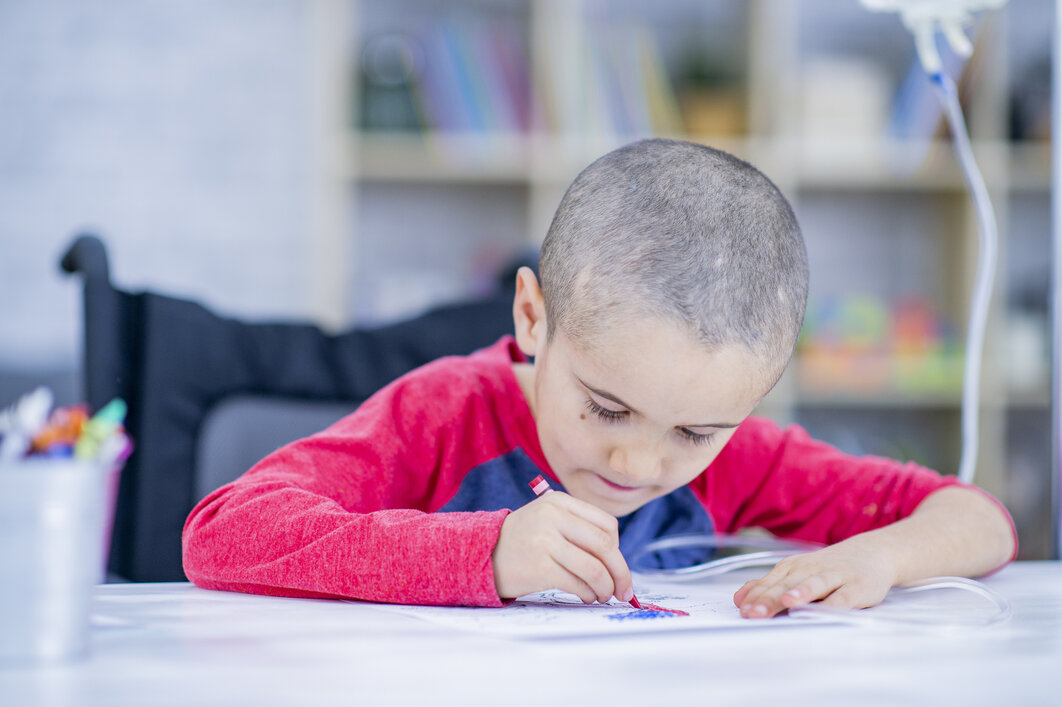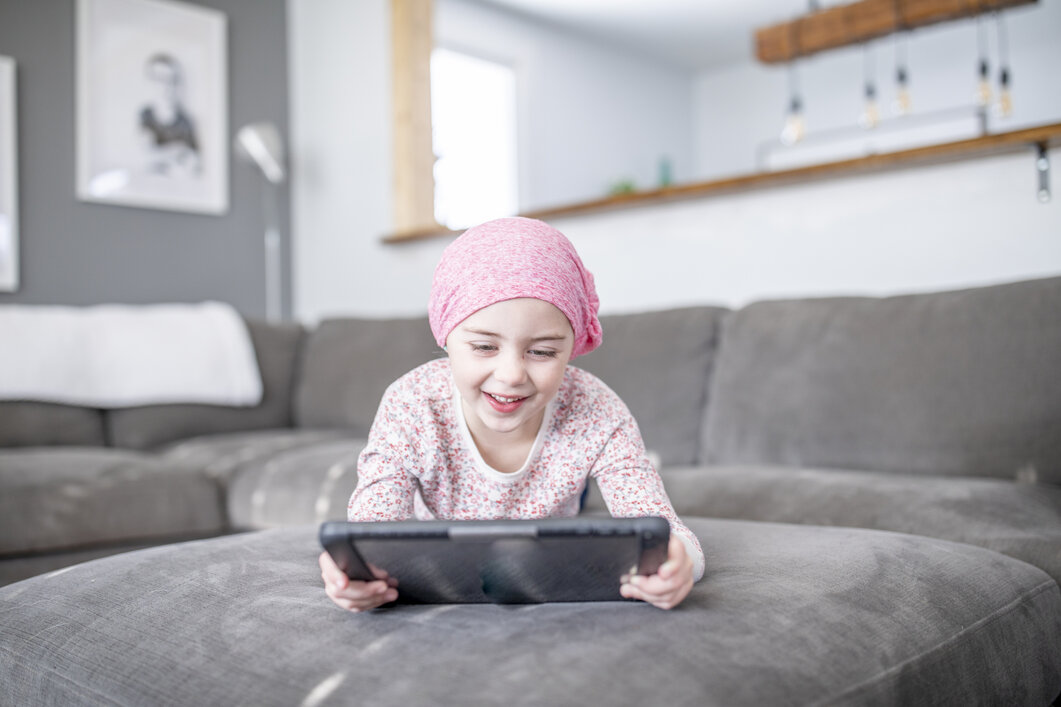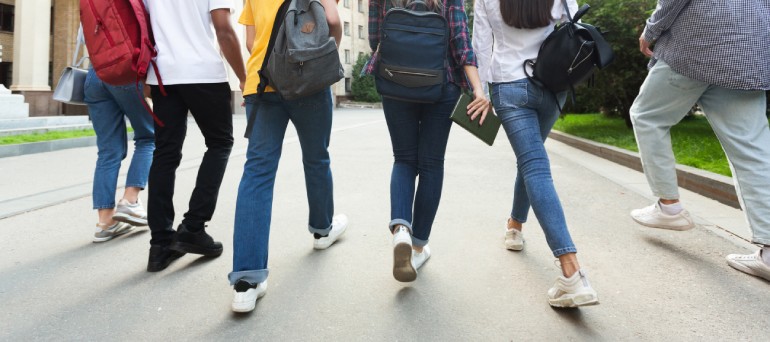As families and teachers prepare for back to school spare a thought for those who can’t return to school due to cancer treatment. Cancer causes isolation which can impact very negatively on our kids.
Teachers can be a bridge for kids to maintain a link to normality and their pals. We are very grateful to the wonderful teachers and principals who made life bearable for our kids during treatment and helped hugely with the difficult transition back to school post treatment.
Here are some useful tips for teachers that may have a child affected by cancer in their classroom:
1. Learn about the diagnosis
2. Don’t shy away from the questions students may have.
3. Be available for the students/siblings to talk in private.
4. Hold class discussions about how to be a good friend.
5. Participate in homeschooling when the student cannot attend class
6. Have the class take turns each day to FaceTime or call their classmate to check-in.
Each one of these simple acts will help alleviate the social isolation and anxiety of children and AYA’s affected by cancer.
Thankfully, more and more children survive childhood cancer now. Anyone who has not lived through a cancer diagnosis and treatment may feel that life returns to normal as soon a treatment has finished, but the life-saving treatments required to save our children and adolescents are toxic and can have long-lasting effects.
In addition, children may have prolonged absences or reduced energy levels that frequently occur during treatment, which may impact their educational progression. Aome types of cancer may require therapy to control or prevent spread of the disease to the brain and/or spinal cord (central nervous system).
This therapy can sometimes affect memory and learning abilities. Parents and teachers should be aware of potential educational problems that may be related to cancer treatment so that children and teens at risk can be watched closely and given extra help if the need arises.
Factors that may place children and teens at increased risk for difficulties in school include:
- Diagnosis of cancer at a very young age
- Numerous or prolonged school absences
- A history of learning problems before being diagnosed with cancer
- Reduced energy levels
- Cancer treatment that affects hearing or vision
- Physical disabilities resulting from treatment
- Cancer therapy that includes treatment to the central nervous system
Children treated for the following types of cancer are more likely to have received treatments that may affect learning and memory.
Since treatment for these types of cancer varies widely, not everyone who was treated for these cancers is at increased risk.
- Tumours located in the eye or eye socket, head, or facial area
- Acute lymphoblastic leukaemia (ALL)
- Non-Hodgkin’s lymphoma (NHL)
Key points
- Neurocognitive effects can emerge years after a child with acute lymphoblastic leukaemia (ALL) finishes treatment.
- Slow processing speed, problems with motor skills and attention difficulties are some symptoms of neurocognitive changes.
- Children who receive radiation to the brain are generally at greater risk of developing neurocognitive problems than those who receive only chemotherapy.
- Young brains are more vulnerable to effects of treatment.
- Learning and memory skills depend on the brain’s ability to process information and apply knowledge.
This ability is called neurocognition. It includes language, memory, concentration, and ability to grasp new concepts.
These skills are applicable in education, on the playground, and in the workplace. - More than half of children treated for acute lymphoblastic leukaemia (ALL) do well and go on to lead normal lives.
However, some children experience neurocognitive changes, such as learning difficulties, during and after treatment.
Symptoms of neurocognitive changes
Symptoms include problems such as:
- Slow processing speed. For example, a child may have trouble keeping up in the classroom or take longer to complete tasks.
Their behaviour may be interpreted as a lack of motivation, effort, or memory, but it may be because they need more time to process information. - Difficulty organizing work and getting it done on time.
- Problems with reading or reading comprehension.
- Difficulty understanding maths concepts, remembering maths facts, and working with columns and graphs.
- Problems with motor skills:
These can include difficulty with handwriting, tying shoes, or riding a bike.
A child may also have problems coordinating what they see with an appropriate motor response.
For example, they may experience problems with copying text, kicking a soccer ball, or throwing a ball into a basket. - Attention difficulties, causing problems focusing for long periods of time. A child can become easily distracted.
- Short-term memory loss



When do neurocognitive effects develop?
These problems emerge over a period of years after a child finishes treatment.
Understanding the neurocognitive effects will prepare a parent and the child to manage any potential learning difficulties that may develop over time.
Factors that increase the risk of developing neurocognitive problems
Generally, children who receive radiation therapy to the brain are at a greater risk of developing neurocognitive problems than those who receive only chemotherapy.
The impact of chemotherapy medicines and radiotherapy
Chemotherapy also has an impact on neurocognition. When a child starts treatment, they may take steroids.
While they are effective in treatment for leukaemia, these drugs may also penetrate the part of the brain that affects memory.
This is called the hippocampus. Consequently, some children may have trouble with memory.
When methotrexate is used in high doses to kill cancer cells in the brain, some children may develop attention and other neurocognitive problems. Younger children and girls tend to be more sensitive to the neurocognitive effects of these drugs.
Chemotherapy and radiation may change the structure of the largest part of the brain, the cerebrum.
These changes can happen to the part of the brain that contains many nerve fibres, called white matter. Changes in the white matter affect overall IQ, attention, memory, and visual-motor skills.
Relapse
Children who relapse with leukemic cells in the central nervous system (CNS) require further treatment targeted to the brain.
As a result of needing further CNS therapy, these children are at higher risk of experiencing more challenging learning problems.
Age and sex
The brains of very young children are still growing and developing. Hence, young brains are more vulnerable to the effects of cancer treatment.
For this reason, younger children who are treated with radiation are more likely to develop learning problems as they get older.
Research also shows that girls under the age of five are more sensitive to the effects of cancer therapy compared to boys, including problems with learning and memory. We do not know why girls are more prone to neurocognitive late effects.
We may be able to answer such questions once we understand more about how ALL treatment affects brain structure and function.
This is an area of active research.
Understand possible learning difficulties a child may experience
Talk to the child about any issues or frustrations they feel. The sooner you understand the potential late effects, the better prepared you will be to help the child access effective resources so they can get appropriate support for learning challenges in school.
An Educational psychologist can help to identify learning and memory problems.
Have realistic expectations
In supporting a child’s future dreams and goals, it is important to balance their abilities with possible neurocognitive challenges.
Encourage them to explore all possible activities and opportunities where they can use their abilities and skills in a fulfilling way.
A child’s motivation to overcome any learning difficulty is an important factor in their success in achieving future goals.
Present a child with a realistic set of choices and options. A positive attitude and motivation will make them more likely to succeed.
If a child is experiencing significant difficulties with learning or attention, it is important to discuss treatment options with their doctor.


Help with Learning Problems
If a problem is identified, special accommodations or services can be requested to help maximise the student’s learning potential.
The first step is usually to schedule a meeting between the parents and the school in order to develop a specialised educational plan.
Examples of strategies that are often helpful for children and teens with educational problems related to cancer treatment include:
- Seating near the front of the classroom
- Minimising the amount of written work required
- Use of tape-recorded textbooks and lectures
- Use of a computer keyboard instead of handwriting
- Use of a calculator for maths
- Modification of test requirements (extra time, oral instead of written exams)
- Assignment of a classroom aide
- Extra help with math, spelling, reading, and organisational skills
- Extra time for transition between subjects
- Duplicate set of textbooks to keep at home
The Transition to Third Level – Webinar
Moving from second to third level can be daunting for any student and parent, and it is even more so for childhood cancer survivors or adolescents and young adults who are undergoing treatment. No young person affected by childhood cancer is left unmarked by their journey and the treatments needed to save their lives. Many of our adolescents and young adults are dealing with long term and late effects, which may be physical, emotional or cognitive.
This webinar provided information and advice on moving through the senior cycle and moving onto higher and further education. We also looked at DARE (Disability Access Route to Education) and how it applies to young people affected by childhood cancer.
You can watch the webinar below.

